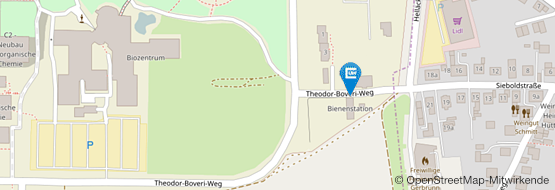Thamm lab - Molecular behavioral physiology
A honey bee colony (Apis mellifera) consists of several thousand individuals, the majority of which are worker bees. Worker bees are responsible for important tasks in the colony (cleaning, brood rearing, foraging, etc.). For this purpose, worker bees have an enormous behavioural spectrum and great behavioural plasticity.
For example, a honey bee colony is able to regulate the climatic conditions in the hive very precisely. They can produce heat or actively contribute to cooling. On the one hand, this is necessary because the honey bee brood is very sensitive to the slightest fluctuations. On the other hand, honey bees are able to live in very different climatic zones or actively survive cold winters.
Our research focuses on the molecular and physiological mechanisms that enable certain behaviours and their plasticity in the first place. A particular focus is on the aminergic system. The methods we combine in our investigations cover a wide range of different fields, with molecular biology, neurochemical analysis and behavioural pharmacology being of particular importance.
- How is the functionality of the flight musculature of the honeybees regulated under thermal stress?
- What is the structure of the aminergic thoracic neuromuscular system of the honeybee and what is its functional significance?
- How do the neurohormonal stress responses of typical forest beetles differ in response to different types of silvicultural interventions? (part of the LWF project "Auswirkungen waldbaulicher Eingriffe auf die Biodiversität - Neue Methoden erlauben neue Einblicke")
-
Walking bumblebees see faster. . In Proceedings of the Royal Society B, 290, p. 20230460. 2023.
- [ URL ]
-
Intrasexual cuticular hydrocarbon dimorphism in a wasp sheds light on hydrocarbon biosynthesis genes in Hymenoptera. . In Communicatons Biology, 6(147). 2023.
- [ URL ]
-
Robustness of the honeybee neuro-muscular octopaminergic system in the face of cold stress. . In Frontiers in Physiology, 13. Frontiers Media {SA}, 2022.
- [ URL ]
-
Octopamine drives honeybee thermogenesis. . In eLife, 11, p. e74334. eLife Sciences Publications, Ltd, 2022.
- [ URL ]
-
Characterization of the 5-HT1A receptor of the honeybee (Apis mellifera) and involvement of serotonin in phototactic behavior.. . In Cellular and Molecular Life Sciences, 67(14), pp. 2467–2479. 2010.
- [ URL ]




